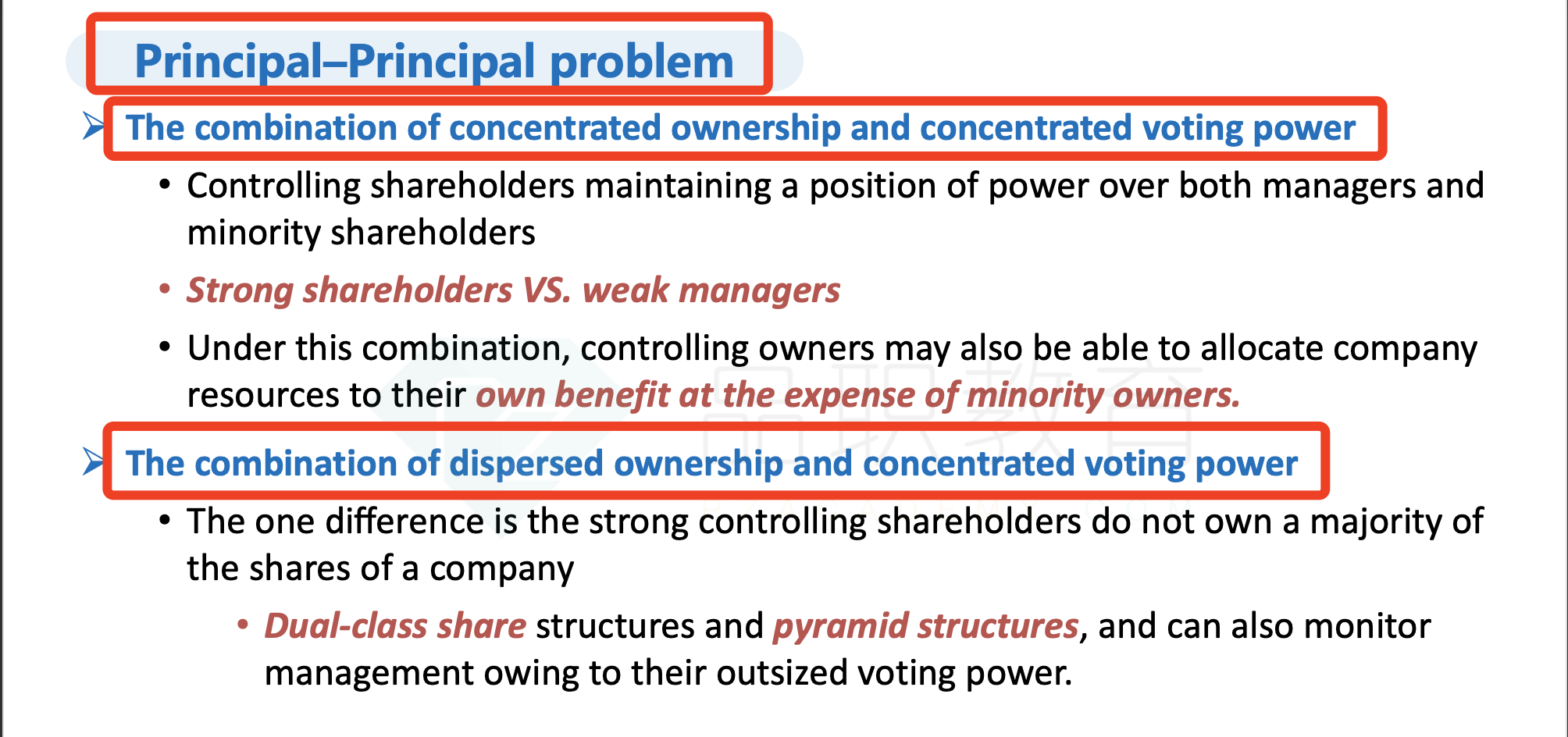NO.PZ202110220100005202
问题如下:
Based on the ownership structures of Syvie Electric and EnileGEN, a principal–principal problem is most likely to occur in the case of:
选项:
A.only EnileGEN
only Syvie Electric
both Syvie Electric and EnileGEN
解释:
B is correct.
Syvie Electric’s largest shareholder owns 58% of the shares; therefore, the company can be described as having concentrated ownership and concentrated voting power.
The combination of concentrated ownership and concentrated voting power is generally associated with controlling shareholders maintaining a position of power over both managers and minority shareholders, known as a principal–principal problem.
EnileGEN’s largest stockholder owns 9% of shares; hence, the company can be classified as having dispersed ownership. EnileGEN also has a straight voting policy, which results in each of the shareholders having one vote per share; thus, EnileGEN also has dispersed voting power.
The combination of dispersed ownership and dispersed voting power is generally associated with shareholders who lack the power to exercise control over managers. This conflict is known as a principal–agent problem.
Consequently, the principal–principal problem is most likely to occur in Syvie Electric, not in EnileGEN.
什么是这个principal–principal问题呀?只知道principal-agent问题?
在什么情况下会出现这个问题?





